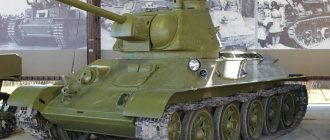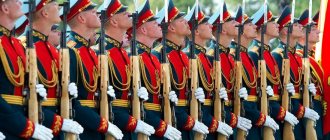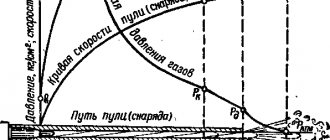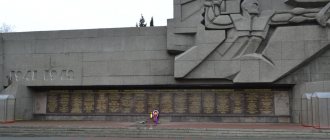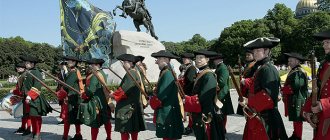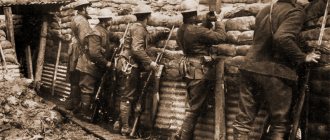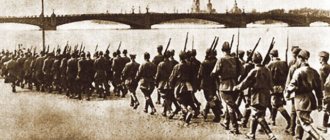It was a shame to lose the Battle of Poltava: the exhausted, hungry and demoralized Swedes, led by a Scandinavian vagabond, did not pose much of a threat.
Klyuchevsky Vasily Osipovich
The Battle of Poltava took place on June 27, 1709 and, in short, became one of the most important battles of the Northern War, which we will briefly discuss in this article. Separately, we will dwell on the reasons for the battle, as well as its course. To do this, based on historical documents and maps, we will draw up a detailed battle plan and understand how significant the results of the victory were.
Reasons for the Battle of Poltava
The Northern War developed in such a way that Sweden, led by the young king-commander Charles 12, won one victory after another. As a result, by mid-1708, all of Russia’s allies were actually withdrawn from the war: both the Polish-Lithuanian Commonwealth and Saxony. As a result, it became obvious that the outcome of the war would be determined in a head-to-head battle between Sweden and Russia. Charles 12, on a wave of success, was in a hurry to end the war and in the summer of 1708 crossed the border with Russia. Initially, the Swedes moved to Smolensk. Peter understood perfectly well that such a campaign was aimed at advancing deeper into the country and defeating the Russian army. When considering the causes of the Battle of Poltava, it is necessary to pay attention to two very important facts:
- On September 28, 1708, a battle took place near the village of Lesnoy, during which the Swedes were defeated. It would seem that this is an ordinary event for war. In fact, as a result of this victory, the Swedish army was left virtually without provisions and supplies, because the convoy was destroyed and the roads for sending a new one were blocked.
- In October 1708, Hetman Mazepa approached the Swedish king. He and the Zaporozhye Cossacks swore allegiance to the Swedish crown. This was beneficial for the Swedes, since the Cossacks could help them resolve issues with the interrupted supply of food and ammunition.
As a result, the main reasons for the Battle of Poltava must be sought in the reasons for the start of the Northern War, which at that time had already dragged on quite long and required decisive action.
Beginning of the Northern War
By the end of the 17th century, Sweden had established itself on the European stage as a powerful power. The state completely controlled access to the Baltic Sea and occupied large coastal areas. Saxony, the Russian Empire and Denmark saw the Scandinavians as a great threat. In about two years, they formed the Northern Alliance coalition, which provided for mutual support in the fight against Sweden.
In February 1700, the army of Saxony, without declaring war, organized an attack on Livonia (the territory of modern Estonia and Latvia). The main goal of the event was to capture the Riga fortress. In the same year, Denmark and Russia, which concluded a peace treaty with the Ottoman Empire, joined the hostilities. It is worth noting that Peter I declared war on Sweden only when the Danish king Frederick IV was forced to leave the coalition: a surprise attack by the Swedish king Charles XII and his army near Copenhagen took the Danes by surprise.
Peter I organized a campaign in Ingermanland (the territory of the modern Leningrad region). His main goal was to capture the powerful Swedish fortress of Narva, which stood on the left bank of the river of the same name. The Battle of Narva ended with the defeat of the Russian army and forced it to retreat.
No one at that time suspected that such a crushing defeat would give a huge impetus to the development of the military skills of the Russian kingdom. Already in 1701, Peter I won the first victories: first, the troops repulsed the Swedish offensive from the sea towards Arkhangelsk, and then on land the Russian army broke the Swedes in the battles of Erestfer and Gummelshof, and stormed the Noteburg fortress. Progress in the conduct of combat operations of the Russian army was obvious. With the personal participation of Peter I, the fortresses of Dorpat and Narva were successfully besieged.
However, it is worth noting that the bulk of Charles XII’s troops were in Saxony, and no one took the Russian military forces seriously. When Sweden successfully completed the Polish campaign, the Scandinavians went to Russia through the southern territories.
The year 1709 arrived. This is the year of the Battle of Poltava.
Balance of forces and means before the start of the battle
The Swedes approached Poltava and began its siege at the end of March 1709. The garrison successfully held back the enemy's attacks, realizing that the king and his army would soon arrive at the battle site. At this time, Peter himself tried to strengthen his army with allied troops. To do this, he turned to the Crimean Khan and the Turkish Sultan. His arguments were not heard, and having gathered a single Russian army, which was joined by part of the Zaporozhye Cossacks led by Skoropadsky, he went to the besieged fortress.
It should be noted that the Poltava garrison was small, only 2,200 people. However, he resisted the constant assaults of the Swedes for almost 3 months. Historians note that during this time approximately 20 attacks were repulsed and 6,000 Swedes were killed.
The Battle of Poltava in 1709, by the time it began, after the arrival of the main Russian forces, brought together the following forces of the parties.
Swedish army before the battle:
- Number - 37,000 people (30,000 Swedes, 6,000 Cossacks, 1,000 Vlachs).
- Guns - 4 pieces
- Generals - Karl 12, Rehnschild Karl Gustav, Levenhaupt Adam Ludwig, Roos Karl Gustav,
Mazepa Ivan Stepanovich.
Russian army before the battle:
- Number - 60,000 people (52,000 Russians, 8,000 Cossacks) - according to some sources - 80,000 people.
- Guns - 111 pieces
- Generals - Peter 1, Sheremetev Boris Petrovich, Repin Anikita Ivanovich, Allart Ludwig Nikolaevich, Menshikov Alexander Danilovich, Renne Karl Edward, Baur Radion Khristianovich, Skoropadsky Ivan Ilyich.
Memory of Victory
In memory of the victory and the soldiers who died for it, a temporary oak cross was erected at the battle site. Peter also planned to found a monastery here. The wooden cross was replaced with a granite one only a hundred years later. Even later - towards the end of the 19th century - the monument and chapel that today’s tourists see were built on the site of the mass grave.
Instead of a monastery, in 1856 a temple was erected in the name of St. Sampson the Old Receiver, which was assigned to the Holy Cross convent. For the 300th anniversary of the battle, the chapel of the Holy Apostles Peter and Paul, standing on the mass grave, was restored, but it, like many historical monuments in Ukraine, is still in disrepair and is almost always closed to the public.
Progress of the Battle of Poltava (briefly)
At 23:00 on June 26 (the eve of the battle), Charles 12 gave the order to wake up the army and form it into battle formation for the march. However, the disunity of the Swedes played into the hands of the Russians. They were able to bring the army into battle formation only at 2 a.m. on June 27th. Karl's plans were thwarted; the wasted 3 hours completely deprived his attack of the element of surprise. This is how the Battle of Poltava began for the Swedes, the course of which will be briefly discussed below.
Storming the redoubts - scheme of the Battle of Poltava
The Swedes left their camp and headed to the battle site. The first obstacle on their way was the Russian redoubts, which were built both horizontally and vertically relative to the position of the Russian army. The assault on the redoubts began in the early morning of June 27, and with it the Battle of Poltava! The first 2 redoubts were taken immediately. In fairness, it should be noted that they were unfinished. The Swedes did not succeed in the rest of the redoubts. The attacks were not successful. This is largely due to the fact that after the loss of the first two redoubts, Russian cavalry under the command of Menshikov advanced to the position. Together with the defenders in the redoubts, they managed to hold back the enemy’s onslaught, preventing him from capturing all the fortifications. Below is a diagram of the Battle of Poltava for a more detailed visual representation of the course of the battle.
Despite the short-term successes of the Russian army, Tsar Peter at 4 o'clock in the morning gives the order for the retreat of all regiments to their main positions. The redoubts fulfilled their mission - they exhausted the Swedes even before the battle began, while the main forces of the Russian army remained fresh. In addition, the Swedes lost about 3,000 people on the approaches to the main battlefield. Such losses are associated with tactical blunders of the generals. Charles 12 and his generals did not expect to storm the redoubts, expecting to pass them through the “dead” zones. In reality, this turned out to be impossible, and the army had to storm the redoubts without any equipment for this.
Decisive battle
With great difficulty the Swedes overcame the redoubts. After this, they took a wait-and-see attitude, expecting the imminent arrival of their cavalry. However, General Roos by that time was already surrounded by Russian units and surrendered. Without waiting for cavalry reinforcements, the Swedish infantry lined up and prepared for battle. Forming in a line was Karl's favorite tactic. It was believed that if the Swedes were allowed to build such a battle formation, it would be impossible to defeat them. In reality it turned out differently...
The Swedish offensive began at 9 am. As a result of artillery shelling, as well as volleys of small arms fire, the Swedes suffered huge losses from the first minutes. The offensive formation was completely destroyed. At the same time, the Swedes still failed to create an attack line that would be longer than the Russian line. If the maximum values of the formation of the Swedish army reached 1.5 kilometers, then the Russian detachments stretched up to 2 kilometers. Having a numerical superiority and smaller gaps between units. The advantage of the Russian army was simply enormous. As a result, after the shelling, which created gaps of more than 100 meters among the Swedes, panic and flight began. It happened at 11 o'clock. In 2 hours, Peter's army won a complete victory.
Losses of the parties in the battle
The total losses of the Russian army were 1,345 killed and 3,290 wounded. The losses of the Swedish army turned out to be simply nightmare:
- All generals were killed or captured
- 9,000 people killed
- 3000 people taken prisoner
- 16,000 people were captured 3 days after the battle, when they managed to overtake the main forces of the retreating Swedes near the village of Perevolochny.
Pursuit of the enemy
The course of the Battle of Poltava after the retreat of the Swedes took on the character of persecution. On the evening of June 27, an order was given to pursue and capture the enemy army. The detachments of Baur, Galitsina and Menshikov took part in this. The advancement of the Russian army was not carried out at the fastest pace. The Swedes themselves were to blame for this, who nominated General Meyerfeld with the “authority” to negotiate.
As a result of all these actions, it was possible to reach the Swedes near the village of Perevolochny only after 3 days. Here they surrendered: 16,000 infantry, 3 generals, 51 command officers, 12,575 non-commissioned officers.
The significance of the Battle of Poltava
From school we are told about the great significance of the Battle of Poltava, and also that this is eternal glory for Russian weapons. Undoubtedly, the battle of Poltava gave the advantage in the war to Russia, but is it possible to speak of historical significance as of ingenious and outstanding significance? This is much more difficult... It is no coincidence that we chose the words of the famous historian Klyuchevsky as the epigraph. You can blame him for anything, but he always describes the era of Peter exclusively positively. And as a result, even Klyuchevsky admits that even a brief study of the Battle of Poltava indicates that losing in it would be a shame!
Historians have significant arguments:
- The Russians were confronted by an exhausted, tired and half-starved army. Charles 12 entered Russian territory in the spring of 1708, and the Battle of Poltava took place only on June 27, 1709. For more than a year, the Swedes were in the enemy’s country, without the necessary provisions, uniforms and ammunition. Remember the battle at Lesnaya. It was there that the Swedes lost all this, and Peter himself later said that the reasons and course of the Battle of Poltava are important, but the key to this success lies precisely with Lesnaya.
- In the Battle of Poltava, the Swedes had only 4 guns! This fact is recognized by all historians. Many even say that these guns never fired a single shot during the battle because there was no gunpowder. As a result, the Swedes were deprived of artillery, while the Russians literally destroyed the enemy with their 111 guns.
- The forces were unequal. Despite the seemingly insignificant superiority of the Russian army, the previous two points should be taken into account in the analysis. After all, the battle lasted only 2 hours! Can you imagine that the general battle of the war ended in just 2 hours if the forces of the opponents were equal? Of course not, this is impossible to even imagine. Remember, for example, the Battle of Borodino - the battle lasted for 24 hours, but here it lasted 2 hours...
This allows us to say that the victory in the Battle of Poltava was very significant, but its results should not be greatly extolled. It is imperative to make a reference to the enemy’s condition.
So that the enemy does not get scared
The fighting spirit of the soldiers matched the mood of the commander. The regiments left in reserve seemed to be asking to go to the front line, wanting to take as active part as possible in such an important battle for the country. Peter was even forced to justify himself to them: “The enemy is standing near the forest and is already in great fear; If you withdraw all the regiments, then you will not give up the fight and will leave: for this purpose, you must also make a reduction from the other regiments, so that through your derogation you will attract the enemy to the battle.” The advantage of our troops over the enemy was indeed great not only in artillery: 22 thousand against 8 thousand infantry and 15 thousand against 8 thousand cavalry.
In order not to frighten the enemy, Russian strategists resorted to other tricks. For example, Peter ordered experienced soldiers to be dressed as recruits so that the deceived enemy would direct his forces at them.
Results of the battle and its consequences
We briefly reviewed the Battle of Poltava. Its results are clear - an unconditional victory for the Russian army. Moreover, the Swedish infantry ceased to exist (of the 30,000 army, 28,000 people were captured or killed), the artillery also disappeared (Charles had 28 guns, 12 initially, 4 reached Poltava, 0 remained after the battle). The victory is unconditional and magnificent, even if you make allowances for the state of the enemy (ultimately this is their problem).
Along with these rosy results, it should be noted that, despite such a glorious victory, the outcome of the war did not come. There are several reasons for this; most historians agree that this is due to Peter’s reaction to the flight of the Swedish army. We said that the Battle of Poltava ended at 11 o’clock in the afternoon, however, the order to pursue came only at night, after celebrating the victory... As a result, the enemy managed to retreat significantly, and Charles 12 himself abandoned his army and went to Turkey to persuade the Sultan to war with Russia.
The results of the Poltava victory are ambiguous. Despite the excellent result, Russia did not receive any dividends from this. The delay in ordering the pursuit led to the possibility of the escape of Charles 12 and to the subsequent 12 years of war.
Preparation
Shortly before the start of the Battle of Poltava (July 7), Peter I ordered the construction of four defensive redoubts. To maintain the secrecy of the operation, the creation of fortifications was carried out at night. The tactics of the Russian army were more progressive, which cannot be said about the Swedes. Despite the smaller number of his troops, Charles XII was confident of victory. He relied on the skill of the soldiers, on swiftness and surprise. Of course, such tactics brought the Swedes many victories, but the king clearly underestimated the Russians.
Separately, it is worth noting that the artillery of our army was superior to the Swedish in all respects. According to historian Evgeniy Tarle, the Swedes spent almost all their shells on endless attacks on fortified Poltava.
If we talk about the participants in the Battle of Poltava in more detail, it should be noted that in addition to infantry, cavalrymen were also present. About 8,000 Swedish reiters and more than 20,000 Russian cavalrymen took part in the battle.
Shortly before the battle, both sovereigns toured their armies and made speeches. Charles XII promised his soldiers lunch in the Russian convoy, and Peter I reminded that they were fighting not for the Tsar, but for the state, for their family and Russian piety.
